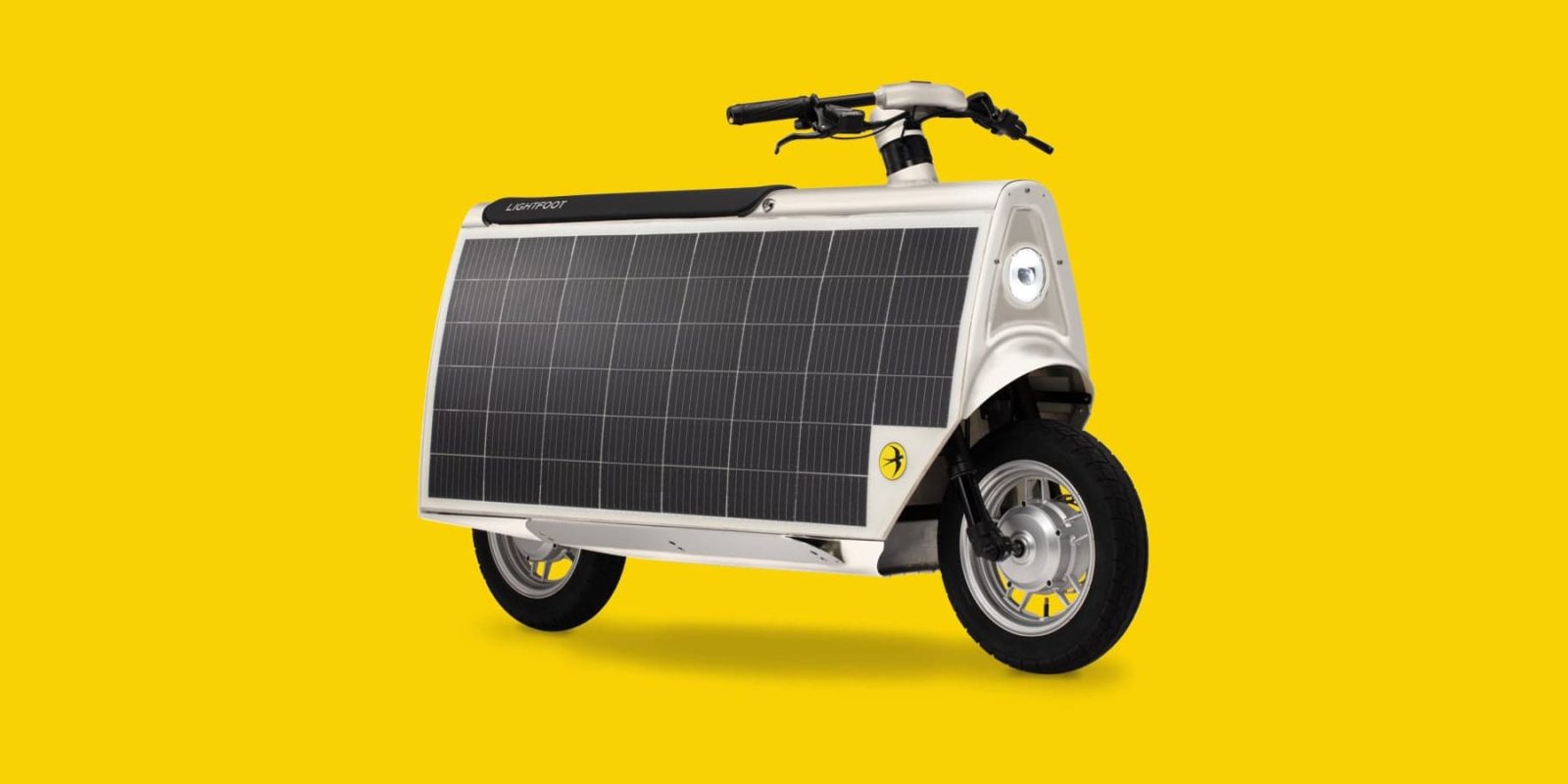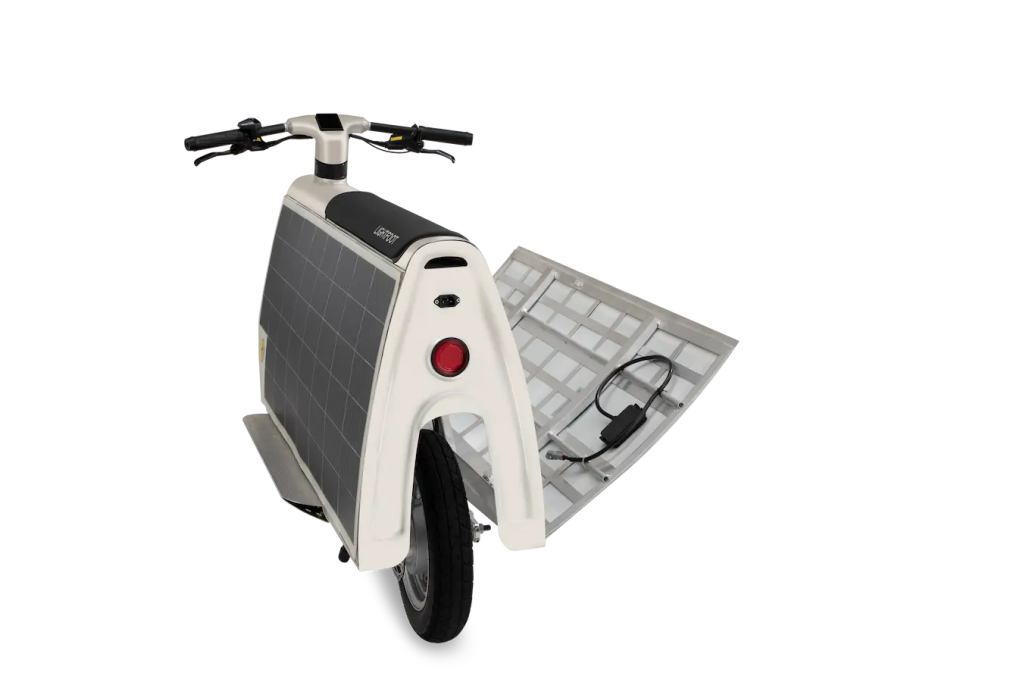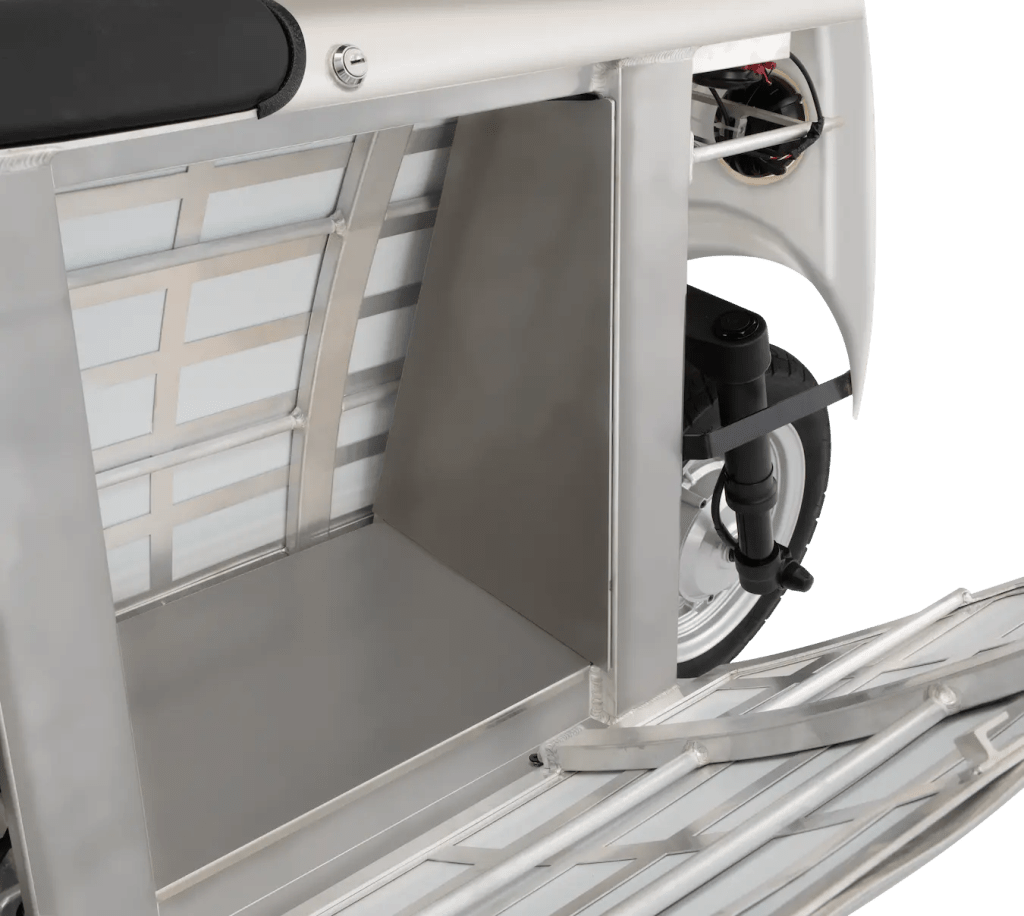
Cargo scooters are a rare breed, filling a niche that exists between typical e-bikes/e-scooters with minimal storage and larger cargo-specific models designed for utility. But that dearth of cargo scooters may be changing, based on several interesting new models we’ve seen lately, including the recently unveiled Lightfoot cargo electric scooter.
Yet unlike the few other cargo scooters rolling around out there, the Lightfoot has one major advantage: its built-in solar panels keep it charged up directly from the sun.
It’s not the first solar-powered scooter we’ve seen, but it’s definitely the most eye-catching model yet.
Developed by Otherlab, the Lightfoot electric cargo scooter features a pair of 120W solar panels on either side, hiding a large 45.2 L (12-gallon) storage compartment. One panel is hinged, opening the entire side of the vehicle for easy cargo access, then locking back in place for secure storage.
Also hidden away by those panels are the equally large UL-certified 1.1 kWh battery and the 600W on-board charger (just in case you do need to plug it into the grid for a quicker charge than you’d get from the solar panels). In fact, the company claims an 80% charge is possible in just 90 minutes from a 110V wall outlet. Based on the company’s figures, it looks like solar charging is likely to fill the battery at a rate of roughly 7-8% per hour (around 3 miles or 5 km of additional range per hour of sun exposure). That means heavy utility users will likely still rely on the wall plug from time to time, but there’s nothing wrong with outdoor parking helping to extend the range.
The company rates the scooter’s range as up to 37 miles (60 km) per charge and claims an extra 18 miles (30 km) of range can be added per day from the solar panels.
That means the scooter could actually be purely solar-charged when used for modest duty cycles, i.e. less than 18 miles (30 km) per day. As the company explained, “If you only need it for a few short errands a day, park it in your driveway and it will always be ready for you. For many riders, we’re hoping this means saying goodbye to plug-in charging altogether.”

With a 20 mph (32 km/h) top speed, the scooter is said to be “bike lane legal” without requiring any additional license or registration.
The Lightfoot is also designed to be easy to work on with minimal mechanical components. The dual motor system relies on hub motors instead of centrally mounted motors, meaning there are no chains or belts to deal with. Between those two 750W rated (1 kW peak) motors, the scooter should get up to speed pretty quickly while laying down nearly 2,000 watts of power.
The company is offering a 1-year warranty on the entire scooter, with an even longer 2-year warranty for the major components consisting of the frame, motors, controllers, brakes, lighting, and front suspension. The scooter is also covered by an “ironclad buy-back guarantee” with the company promising to buy the scooter back from any riders who are “unsatisfied with their purchase for any reason.”
Set to begin deliveries in January 2025, the Lightfoot is now available for purchase with an MSRP of US $4,995.

Electrek’s Take
Look, I’m split here. My inner mechanical engineer is drooling over this thing, while my inner MBA is wondering how you sell it to a broader market than… people like me. My two professional backgrounds have often been in conflict before, but this is peak engineer’s delight meets ultra-niche aesthetic.
Sure, I would 100% ride the hell out of this thing. I’d ride it everywhere with zero qualms about the appearance. But I’m probably not the best representative of the average scooter customer since I tend towards the tech nerd side of the spectrum. And so I hope that the Lightfoot can find wider appeal than I fear it may be limited to.
Oh, and for all of those ready to hammer out the “AcTuAlLy ThAt’S NoT tHe MoSt EfFiCiEnT WaY tO dO iT…” comments, I think that’s missing the point. The whole idea here isn’t to maximize every photon, but rather to not waste the ample sunlight that otherwise simply bakes the paint on every other scooter and moped out there (and don’t get me started on the “moped” linguistic purists). Sure, you’re probably only ever getting appreciable solar charging from one panel at a time, but why not maximize your chances of catching those rays whenever you can?
So all told, I love this thing. I just wonder how many people will love it as much as I do.
FTC: We use income earning auto affiliate links. More.












